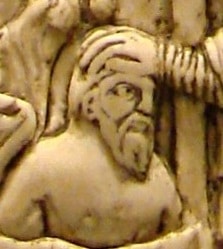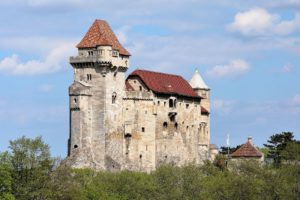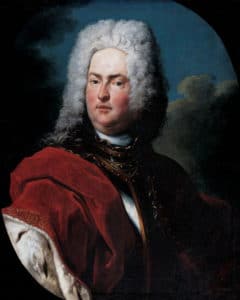
The area that later became Liechtenstein remained under Frankish hegemony (Merovingian and Carolingian dynasties), until the empire was divided by the Treaty of Verdun in 843 AD, following the death of Charlemagne. The territory of present-day Liechtenstein was under the possession of East Francia. It would later be reunified with Middle Francia under the Holy Roman Empire, around 1000 AD. Until about 1100, the predominant language of the area was Romansch, but thereafter German began to gain ground in the territory. In 1300, an Alemannic population—the Walsers, who originated in Valais—entered the region and settled. The mountain village of Triesenberg still preserves features of Walser dialect into the present century.
Foundation of a Dynasty:
By 1200, dominions across the Alpine plateau were controlled by the Houses of Savoy, Zähringer, Habsburg, and Kyburg. Other regions were accorded the Imperial immediacy that granted the empire direct control over the mountain passes. When the Kyburg dynasty fell in 1264, the Habsburgs under King Rudolph I (Holy Roman Emperor in 1273) extended their territory to the eastern Alpine plateau that included the territory of Liechtenstein. This region was enfeoffed to the Counts of Hohenems until the sale to the Liechtenstein dynasty in 1699.
In 1396 Vaduz (the southern region of Liechtenstein) gained imperial immediacy, i.e. it became subject to the Holy Roman Emperor alone.

The family, from which the principality takes its name, originally came from Liechtenstein Castle in Lower Austria which they had possessed from at least 1140 until the 13th century (and again from 1807 onwards). The Liechtensteins acquired land, predominantly in Moravia, Lower Austria, Silesia, and Styria. As these territories were all held in feudal tenure from more senior feudal lords, particularly various branches of the Habsburgs, the Liechtenstein dynasty was unable to meet a primary requirement to qualify for a seat in the Imperial diet (parliament), the Reichstag. Even though several Liechtenstein princes served several Habsburg rulers as close advisers, without any territory held directly from the Imperial throne, they held little power in the Holy Roman Empire.

For this reason, the family sought to acquire lands that would be classed as unmittelbar (not sellable) or held without any intermediate feudal tenure, directly from the Holy Roman Emperor. During the early 17th century Karl I of Liechtenstein was made a Fürst (prince) by the Holy Roman Emperor Matthias after siding with him in a political battle. Hans-Adam I was allowed to purchase the minuscule Herrschaft (“Lordship”) of Schellenberg and county of Vaduz (in 1699 and 1712 respectively) from the Hohenems. Tiny Schellenberg and Vaduz had exactly the political status required: no feudal lord other than their comital sovereign and the suzerain Emperor.
Principality:
On 23 January 1719, after the lands had been purchased, Charles VI, Holy Roman Emperor, decreed that Vaduz and Schellenberg were united and elevated the newly formed territory to the dignity of Fürstentum (principality) with the name “Liechtenstein” in honor of “[his] true servant, Anton Florian of Liechtenstein”. It was on this date that Liechtenstein became a sovereign member state of the Holy Roman Empire. It is a testament to the pure political expediency of the purchase that the Princes of Liechtenstein did not visit their new principality for almost 100 years.
